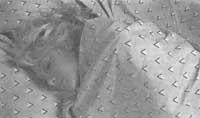Chronobiology: Is the body a clock?

Human biological processes (from cell division to intellectual activity through sleep phases and heart pulsations) can be controlled by the clock, as they are associated with different cycles of the day or pulse.
These periodic modifications of organic functions, their sporadic repetition, their causes, their effects and relationships constitute the field of study of chronobiology. This scientific branch, chronobiology, is still young, but it offers us increasingly useful and attractive results.
Anyone has the experience of their life cycles: they know at what time they are encouraged and most eager to work. Other times, however, you will be asleep or lethargic; other times, hungry or restless.
There are all kinds of rhythms: respiratory cycle, cardiac cycle, intestinal movements, protein synthesis, blood pressure and composition, gland secretion, kidney function, insulin needs, etc. (to mention some rhythms relating to the human body). There are also mental rhythms that govern the speed of calculation, the speed of reflexes or the brain activity that indicates an electroencephalogram.
These rhythms can offer great help to those who want to better understand Nature and to those who want to understand the relationship of the human being with Nature. These rhythms relate the internal biological environment of our body to the external cosmo, the rhythm of the Universe. In short, these biological rhythms are solar, lunar, weekly, circadian (diurnal) and ultra or impassable.
- Solar
cycle It covers the whole year, with all seasons. Some biologists consider it of great importance to plants. And not for us? Does man not live in contact with the world of plants and ultimately with Nature?
The inhalation of carbon dioxide or oxygen is different and plants indicate this rhythm. It is not the same to eat raw grape as can, grape in autumn, etc. If we violate these laws, it is not surprising that the organism responds with different diseases. - Lunar rhythms
are limited by the different phases of the Moon and are of great importance to all sea creatures. For terrestrial people, it is necessary to take into account the sexual aspect: they regulate the secretion of estrogen and menstruation (menstruation) in women, such as the duration of pregnancy (280 days on average, that is, 10 lunar cycles). - The weekly
 The inner clocks of our body are located in the brain, programmed for night rest.
The inner clocks of our body are located in the brain, programmed for night rest.
cycle is preceded. Formerly it was taken into account for hygienic uses and today it is especially linked to the rest of the weekend.
Although some do not give us importance, we should not despise and despise. It has an undeniable influence on the world of work and school, since it is impossible for the person to be at ease without resting more than eight days and the children of the school the same happens. - Circadian rhythms correspond
to the Day/Night alternation. It delimits the rotations of the Earth on its axis throughout the day. They regulate the phases of activity or rest of each of the organs of our body, especially those related to the neurobegetative system (nervous system that we do not control voluntarily): body temperature rises in the afternoon (maximum at six and minimum at dawn, with very little incidence of external references, schedules and stimuli), blood pressure is at its highest point and the activity of the adrenal glands is maximum in the morning.
Knowing this circadian rhythm better should lead us to maintain the most biological time possible in our daily activity and not to prove otherwise. Although our body can avoid this natural schedule, this produces in the long term its effects: insomnia, anguish, irritability and disorders of the neurobegetative system. Despite trying, the Earth keeps turning. - The rhythms below
24 hours are called this. These include waves of brain electrical activity, breathing rate, digestive rhythm, heart rate, which separate two consecutive periods of sleep (90 minutes). This last rhythm is also carried out in a state of view, since every hour and a half the imagination is sharpened while the identification of the optical signals is improved and the superiority of the cerebral hemispheres is modified.
Chronobiology: New Science
This discipline is only 15 years old, but it already has some clear things: man does not have a single central clock, but many, which can be identified with those of other mammals. These watches are located in the brain and are responsible for our intellectual, physical and sports activities.

The inner clocks of our body are programmed for night rest. However, 20% of Western people work at night: workers, nurses, taxi drivers, factory guards, police, journalists, etc. The desynchronization of its biological rhythms can cause liserika disorders, sleep disturbances during the day or almost uninterrupted state of view
According to French psychiatrist Sylvire Royant Parola, some people who have worked at night cannot resynchronize their internal clock for a long time and need medical help. The same is true of pilots (both aircraft and ships) and those working on fake schedules, as well as the staff of intercontinental flights from America to Europe (the difference between five and six hours). The rhythm of your internal temperature should be recovered one week, while the rate of cortisol (hormones secreted by the adrenal gland) is about three weeks.
Chromobiology has paid special attention to investigating the organization of life 24 hours a day. According to Soviet scientist Leonid Glybin, the body reaches its peak at five in the morning, and reminds us that people who live for many years begin their working day at six in the morning.
The other high moments of the day are 11 to 12, 16 to 17 and 18 to 19 hours, and finally, 10 to 11 at night. Glybin analyzed thousands of clinical histories, trauma statistics, the most frequent hours of deaths and deliveries, and points of greater or lesser intensity of work. Will we be able to adapt and synchronize our daily work/rest/leisure rhythm with our internal clock? No doubt our worship would thank him.





